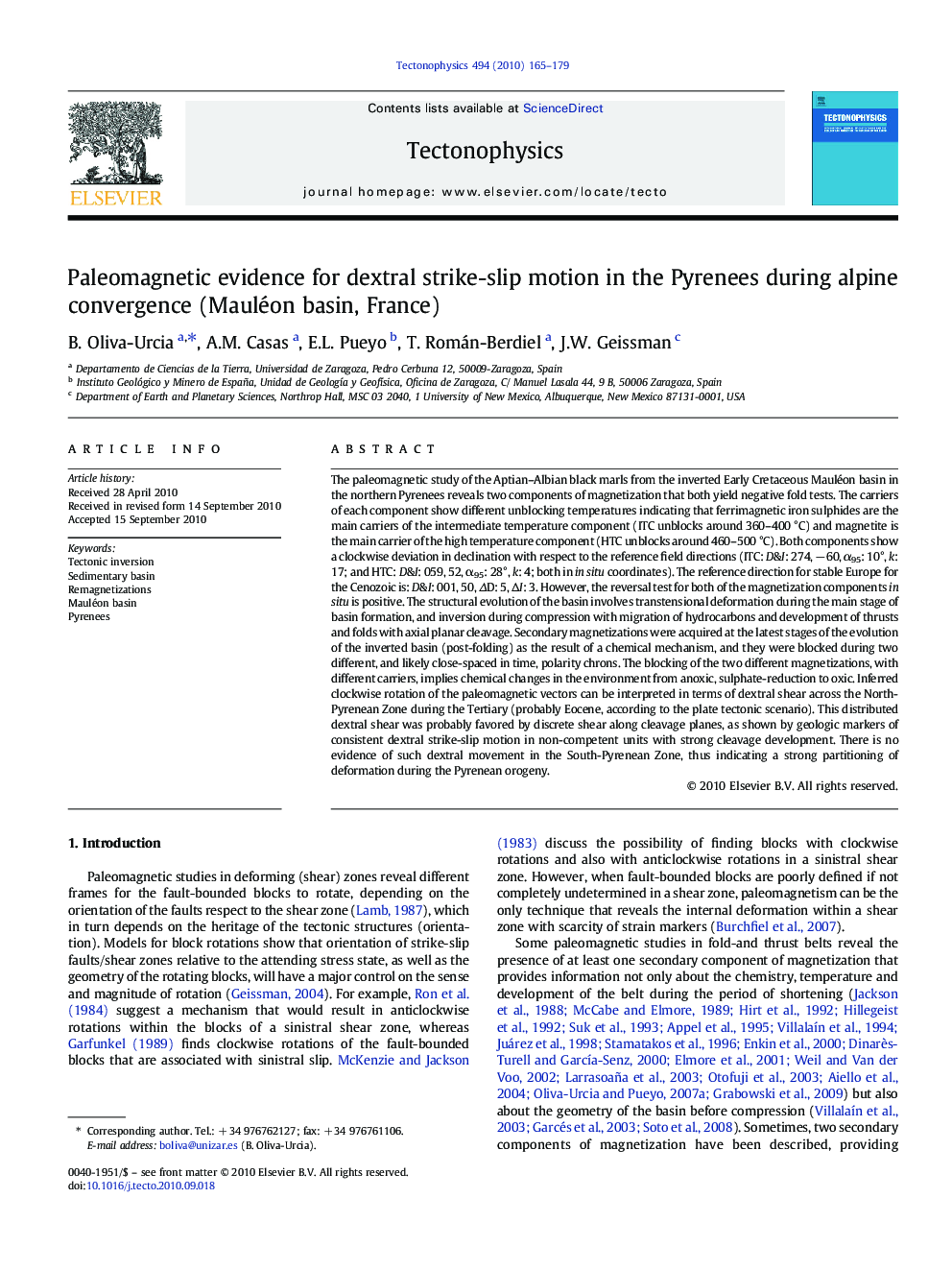| کد مقاله | کد نشریه | سال انتشار | مقاله انگلیسی | نسخه تمام متن |
|---|---|---|---|---|
| 4693349 | 1636858 | 2010 | 15 صفحه PDF | دانلود رایگان |

The paleomagnetic study of the Aptian–Albian black marls from the inverted Early Cretaceous Mauléon basin in the northern Pyrenees reveals two components of magnetization that both yield negative fold tests. The carriers of each component show different unblocking temperatures indicating that ferrimagnetic iron sulphides are the main carriers of the intermediate temperature component (ITC unblocks around 360–400 °C) and magnetite is the main carrier of the high temperature component (HTC unblocks around 460–500 °C). Both components show a clockwise deviation in declination with respect to the reference field directions (ITC: D&I: 274, −60, α95: 10°, k: 17; and HTC: D&I: 059, 52, α95: 28°, k: 4; both in in situ coordinates). The reference direction for stable Europe for the Cenozoic is: D&I: 001, 50, ΔD: 5, ΔI: 3. However, the reversal test for both of the magnetization components in situ is positive. The structural evolution of the basin involves transtensional deformation during the main stage of basin formation, and inversion during compression with migration of hydrocarbons and development of thrusts and folds with axial planar cleavage. Secondary magnetizations were acquired at the latest stages of the evolution of the inverted basin (post-folding) as the result of a chemical mechanism, and they were blocked during two different, and likely close-spaced in time, polarity chrons. The blocking of the two different magnetizations, with different carriers, implies chemical changes in the environment from anoxic, sulphate-reduction to oxic. Inferred clockwise rotation of the paleomagnetic vectors can be interpreted in terms of dextral shear across the North-Pyrenean Zone during the Tertiary (probably Eocene, according to the plate tectonic scenario). This distributed dextral shear was probably favored by discrete shear along cleavage planes, as shown by geologic markers of consistent dextral strike-slip motion in non-competent units with strong cleavage development. There is no evidence of such dextral movement in the South-Pyrenean Zone, thus indicating a strong partitioning of deformation during the Pyrenean orogeny.
Research Highlights
► An intermediate temperature component and a high temperature component are described in the Mauléon basin.
► Both components do not pass the fold test, they are postfolding.
► The different unblocking temperatures for both components indicate different magnetic carrier: ferrimagnetic iron sulphides for the intermediate temperature component, and magnetite for the high temperature component.
► Both components are clockwise rotated respect to the stable Europe reference, suggesting dextral shear across the North Pyrenean Zone in the latest stages of the alpine orogeny.
Journal: Tectonophysics - Volume 494, Issues 3–4, 15 November 2010, Pages 165–179